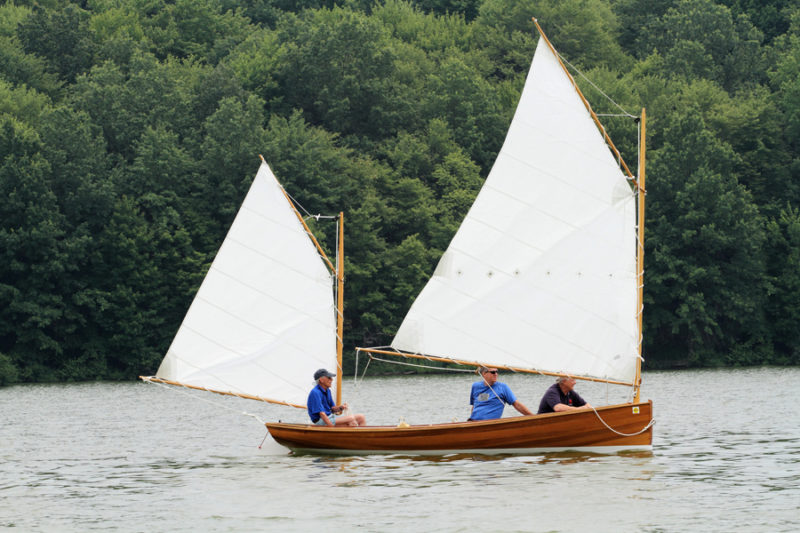 Ed Rombout Photography
Ed Rombout PhotographyWith 130 square feet of sail set, the Coquina slips along in light air.
Joe Brennan’s as-yet-unnamed Herreshoff Coquina is a cold-molded version of the lapstrake cat-ketch that Nathanael Herreshoff built for himself in 1889. This is Joe’s first boat, built to test the idea of a career as a boatbuilder: “So I had this silly idea . . . ,” he said. He purchased plans from Doug Hylan of Brooklin, Maine. The plans for the 16’8” by 5′1″ Coquina, developed by Doug with Maynard Bray, include directions for Herreshoff’s original construction of white cedar on oak as well as for glued-lapstrake plywood. Joe enlisted the help of Terry Schuster, a craftsman in Pittsburgh who brought his knowledge and experience as a boatbuilder to the project. They chose to build the Coquina in cold-molded red cedar. Using a CAD program they drew out full-sized patterns for the stations and all of the parts, except the planking. Western red cedar planking measuring 17′ x 5″ x 1/8″ came from Baird Brothers Lumber of northeast Ohio. Joe and Terry book-matched all the planks that would show inside and outside of the hull. The building of the hull was done one side at a time. The inner and outer layers were laid horizontally, and the middle layer diagonally. After each side was planked it was removed, sanded, and finished, then put back on the molds. A bead of 3M 5200 and silicon-bronze screws secured the hull halves to the keelson. The builders installed white oak mast steps and knees to hold the side decks and the seat cleats. The seats are white oak and mahogany. The decks are marine-grade plywood with highly figured African mahogany faces. The transom is sapele.
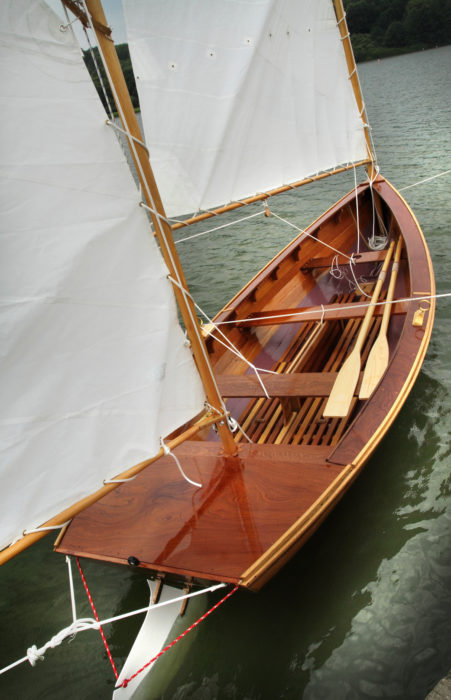 Ed Rombout Photography
Ed Rombout PhotographyThe cold-molded construction provides a clean interior and a light but strong structure.
The masts, booms, and yards are Sitka spruce and were built by Max Peterson of Max’s Woodworks of Bethel Park, Pennsylvania. They were delivered ready for sanding and varnish. Tom Bell of Bell Sails in Washington, Pennsylvania, made the Dacron sails—an 83-sq-ft main and a 47-sq-ft mizzen. The centerboard is high-strength steel and the rudder is aircraft aluminum. Steering is as designed by Herreshoff: a rope through the transom and running around the perimeter of the interior. Joe, on his “crazy tangent,” worked nights and weekends in a rented shop for about three years. He launched the boat in the summer of 2013 on a small lake near the shop to see how she would row. “At the first stroke of the oars she took off like rabbit,” he said. Later, he took her out for a first sail. “She stood up to the wind, rain, and chop. She stayed dry for the most part and was a pleasure to sail—a dream come true.” The boat still awaits a christening, a name, and an owner. Joe is now working on a Rushton wooden canoe, a project that is much more manageable and less expensive.![]()
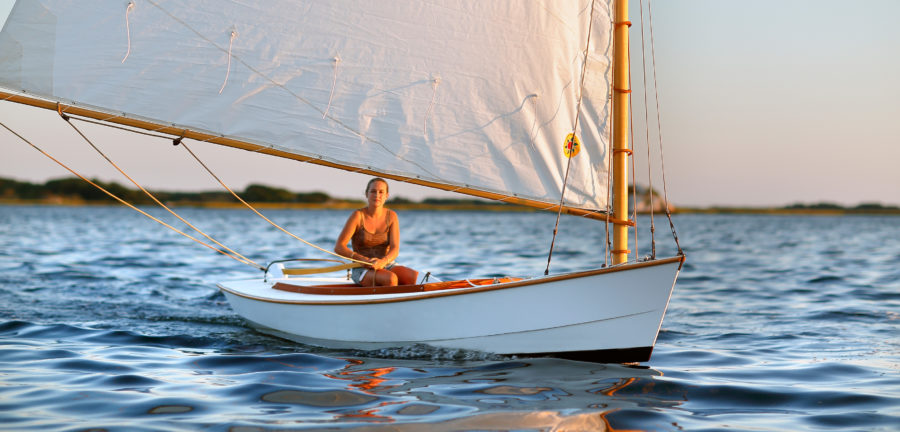
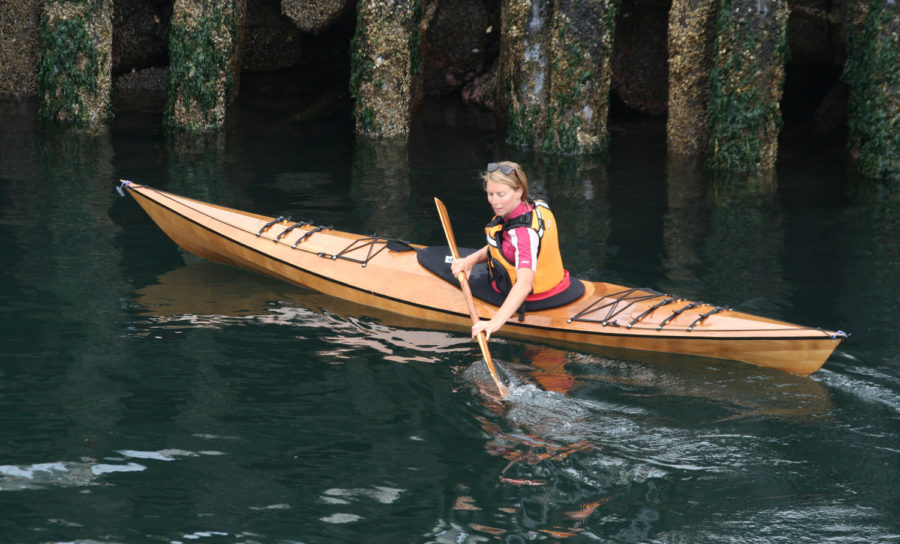
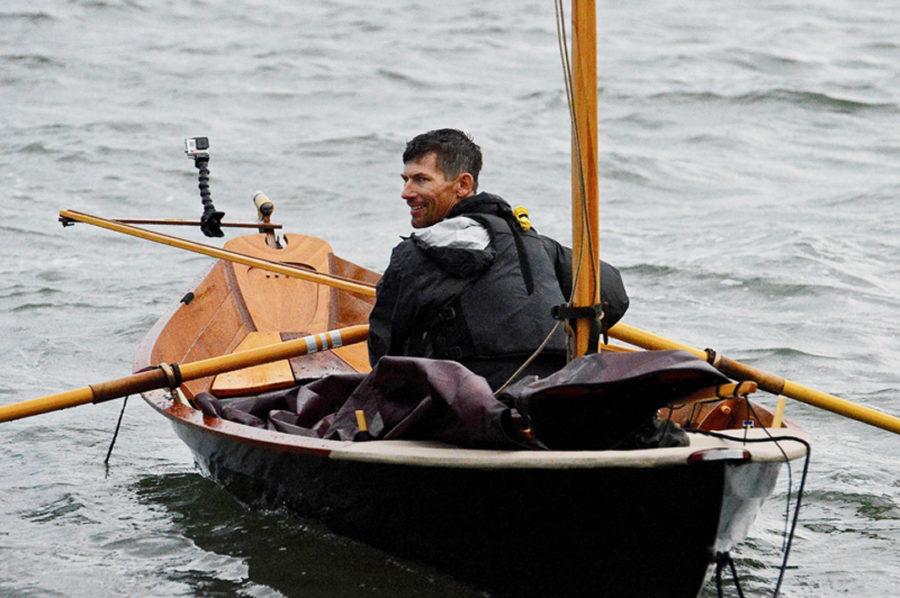
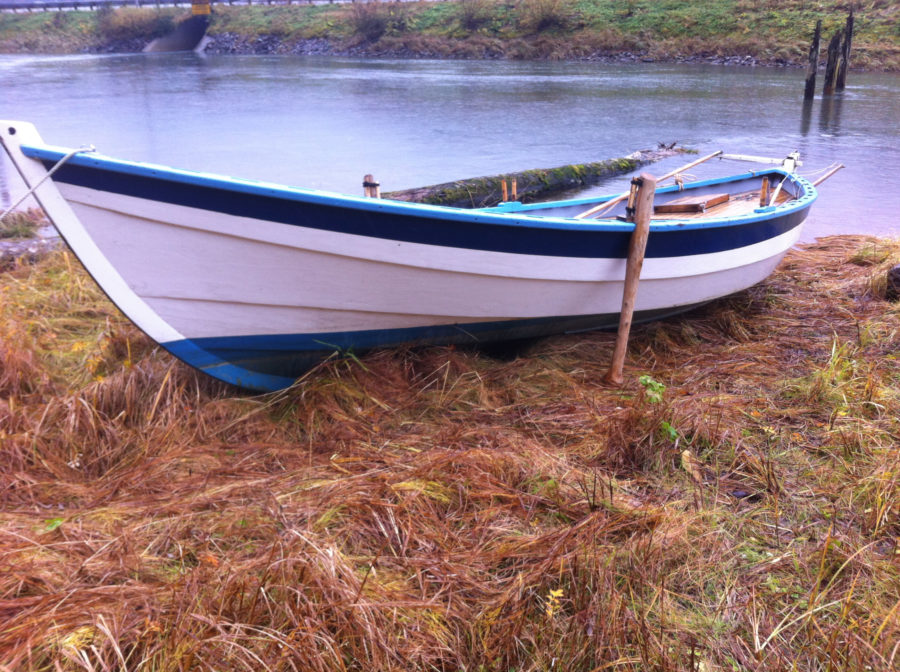
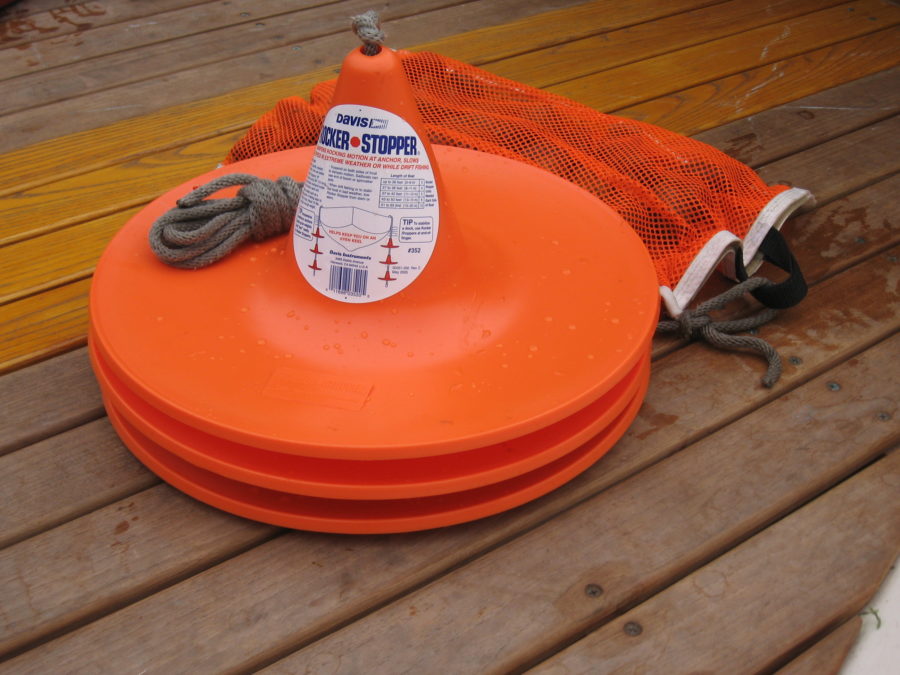
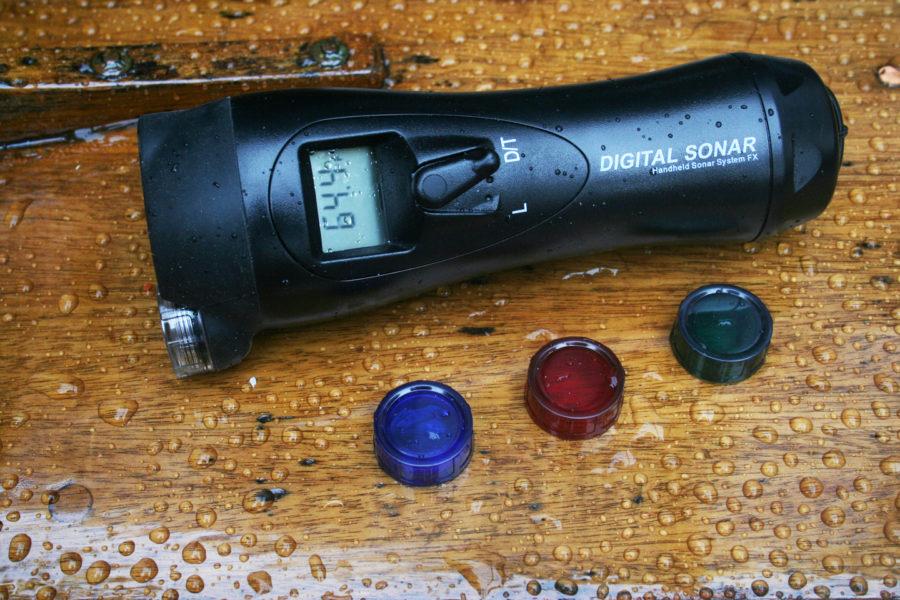
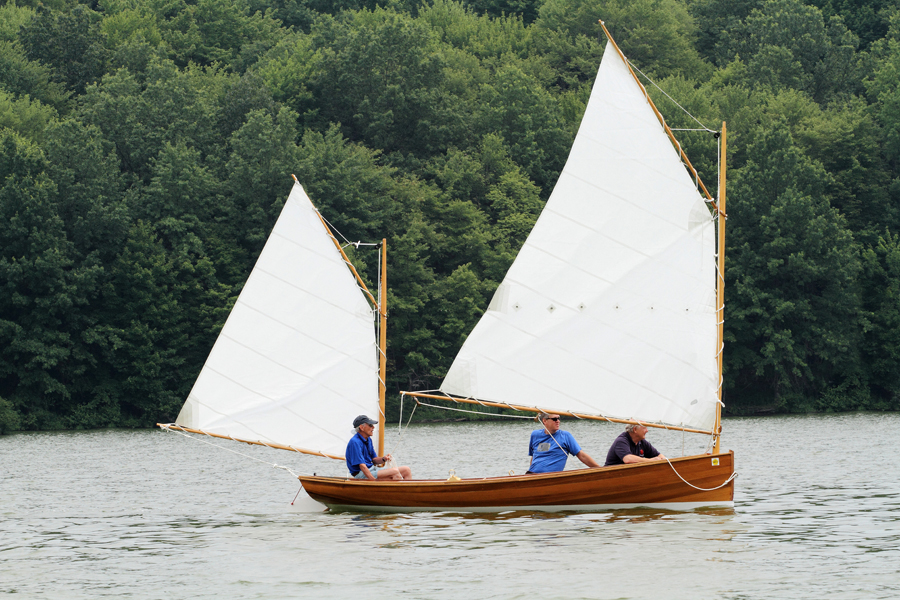
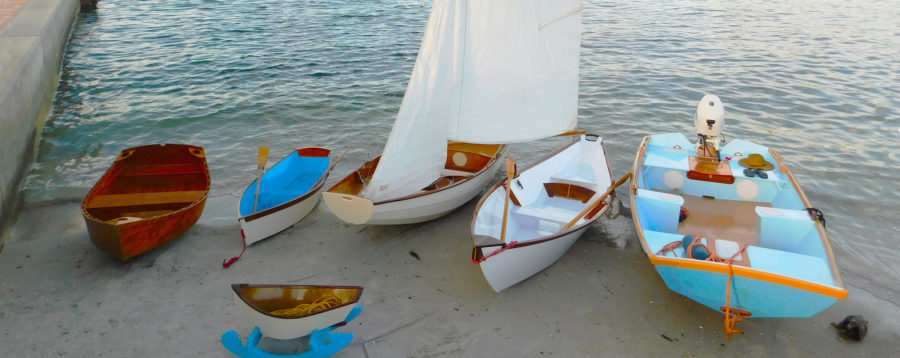


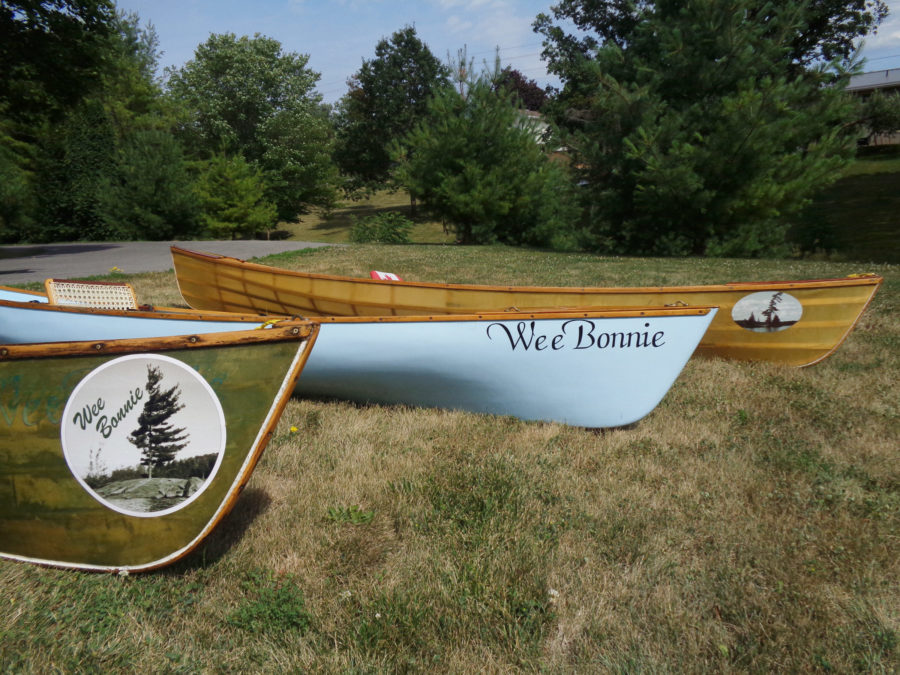
Very glad to see some boatbuilders in my region as I usually envy the coastal states northeast of me.
I had never heard of the rope steering method before this. Did Herreshoff design this into other small boats? Have other designers used it? With two sails you can balance the boat well. I wonder how the rope method would perform with a single sail rig.
Beautifully finished!